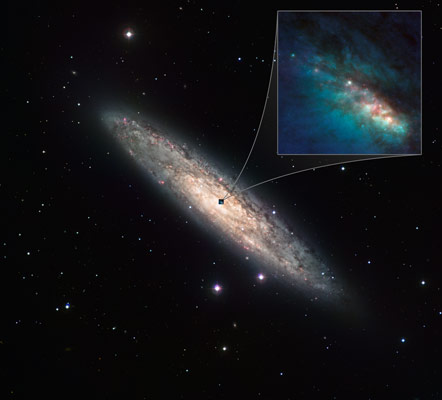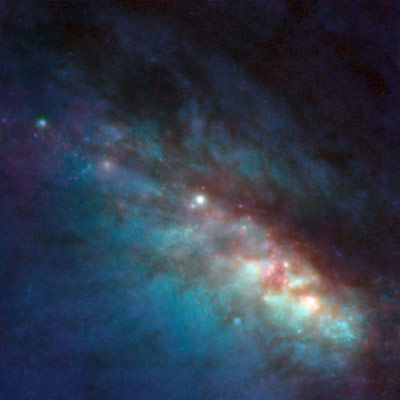NGC 253

NGC 253. The whole galaxy is shown here as observed with the WFI instrument, while the insert shows a close-up of the central parts as observed with the NACO instrument on ESO's Very Large Telescope and the ACS on the NASA/ESA Hubble Space Telescope. Credit: ESO.

Close-up of the central regions of NGC 253. The field of view is 15 arcseconds. Credit: ESO.
NGC 253, also known as the Silver Coin Galaxy or the Sculptor Galaxy, is a large, type Sc spiral galaxy, seen nearly edge-on. It is the brightest member of the Sculptor Group of galaxies in the constellation Sculptor and was discovered by Caroline Herschel on 23 September 1783.
NGC 253 is also classified as a starburst galaxy (the nearest one to Earth) because of the high rate of star formation and dense dust clouds in its nucleus. The energetic nuclear region glows brightly at X-ray and gamma-ray wavelengths. The center of the galaxy appears to harbor a twin of our own Milky Way's supermassive black hole.
| visual magnitude | 7.1 |
| apparent size | 25' × 7' |
| diameter | 70,000 light-years |
| distance | 10 million light-years |
| position | RA 00h 47.6m, Dec -25° 17' |


